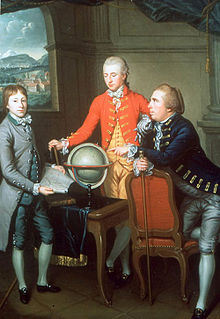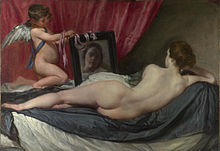- The Art Fund
-
The Art Fund 
Founded 1903 Location London, United Kingdom Key people David Verey CBE
(Chairman)Area served United Kingdom Revenue £8,120,000 [1] Members 80,000[citation needed] Website http://www.artfund.org The Art Fund (formerly the National Art Collections Fund) is an independent membership-based British charity, which raises funds to aid the acquisition of artworks for the nation. It gives grants and acts as a channel for many gifts and bequests, as well as lobbying on behalf of museums and galleries and their users. The Fund relies on members' subscriptions and public donations for funds and does not receive funding from the government or the National Lottery.
Since its foundation in 1903 the Fund has been involved in the acquisition of over 860,000 works of art of every kind, including many of the most famous objects in British public collections, such as Velázquez's Rokeby Venus in the National Gallery, Picasso's Weeping Woman in the Tate collection, and the Anglo Saxon Staffordshire Hoard and medieval Canterbury Astrolabe Quadrant in the British Museum.[citation needed]
Contents
History
 Eugène Boudin. The Entrance to Trouville Harbour, 1888, presented to the National Gallery in 1906.
Eugène Boudin. The Entrance to Trouville Harbour, 1888, presented to the National Gallery in 1906.
The original idea for an arts charity can be traced to a lecture given by John Ruskin in 1857 when he called for the establishment of a "great society" to save works of art for public collections and "watch over" them.
The Art Fund, then named The National Art Collections fund, was founded in 1903 in order to help museums and galleries acquire works of art. The founders of The Art Fund, who included Christiana Herringham, D. S. MacColl and Roger Fry, were prompted by what they saw as the inadequacy of government funding of museums.
Art critic Frank Rutter said it made him "boil with rage" that the Fund had spent thousands of pounds on Old Master paintings, some of which he considered of dubious merit or condition, but "would not contribute one half penny" to his appeal in 1905 to buy the first Impressionist painting for the National Gallery, although it welcomed the prestige of presenting the painting, Eugène Boudin's The Entrance to Trouville Harbour, the following year.[2] He said "the Fund's inertia and snobbish ineptitude are entirely characteristic of the art-officialdom in England."[2]
In 2005 the Fund was caught up in the controversy surrounding the purchase by the Tate gallery of The Upper Room by Chris Ofili.[3]
In 2006 it was caught out when it was discovered that the Amarna Princess, purportedly an ancient Egyptian sculpture, was actually a forgery by Shaun Greenhalgh.
Art Fund Prize
 Portrait of Douglas, 8th Duke of Hamilton, and his companions with a view of Geneva in the distance. Painted in 1774 by Jean Preudhomme. Acquired with the help of the Art Fund for the National Museums of Scotland in 1992.
Portrait of Douglas, 8th Duke of Hamilton, and his companions with a view of Geneva in the distance. Painted in 1774 by Jean Preudhomme. Acquired with the help of the Art Fund for the National Museums of Scotland in 1992. Main article: Art Fund Prize
Main article: Art Fund PrizeThe Art Fund sponsors the Art Fund Prize (known as the Gulbenkian Prize from 2003 through 2007), which is a £100,000 prize awarded annually to the museum or gallery that had the most imaginative, innovative or popular project during the previous year.[4] The winners of the prize since its association with the Art Fund have been:
- 2008 — Lightbox gallery and museum, Woking[5]
- 2009 — Wedgwood Museum, Stoke-on-Trent[6]
- 2010 — Ulster Museum, Belfast[7]
- 2011 — A History of the World in 100 Objects, British Museum, London[8]
Fundraising campaigns
In addition to using its own funds to help museums and galleries acquire art, the Art Fund organises national fundraising campaigns to secure significant works of art that are in danger of being lost from public view.
In 2009 the Art Fund led a fundraising campaign to save the Staffordshire Hoard, a collection of over 3,500 gold and silver artefacts discovered in Staffordshire. Over £900,000 was raised through public donations, and the campaign received substantial funds from trusts and foundations. As a result of the campaign, the £3.3 million treasure was acquired for Birmingham Museums and Art Gallery and the Potteries Museum and Art Gallery, Stoke-on-Trent.
In 2010 The Procession to Calvary by Pieter Breughel the Younger, which had been hung in Wakefield's Nostell Priory for over 200 years, came under risk of being sold on the open market. The Art Fund worked with the National Trust to raise the £2.7 million required to purchase the painting for the National Trust's art collection.
Artist Rooms
In 2008 the Art Fund helped Tate and the National Galleries of Scotland acquire ARTIST ROOMS, a collection of postwar and contemporary art. Since then the Art Fund has supported a tour of the collection around the UK, as well as providing additional funds to help museum display the works. By the beginning of 2011 ARTIST ROOMS tours had been seen by approximately 12 million people across Britain.
Notes and references
- ^ "Charity overview". http://www.charitycommission.gov.uk/Showcharity/RegisterOfCharities/CharityWithPartB.aspx?RegisteredCharityNumber=209174&SubsidiaryNumber=0. Retrieved 18 August 2011.
- ^ a b Rutter, Frank. Art in My Time, p.118–119, Rich & Cowan, London, 1933.
- ^ Hastings, Chris. "Tate Broke Own Rules on Ofili Buy", The Sunday Telegraph, 18 December 2005. Retrieved 10 October 2008.
- ^ "Art Fund to sponsor Gulbenkian Prize". The Art Fund. 12 June 2007. http://www.artfundprize.org.uk/press/2008/press-release-070612.php.
- ^ "Museum inspired by community campaign scoops £100,000 prize". The Art Fund. 22 May 2008. http://www.artfundprize.org.uk/press/2008/press-release-080522.php.
- ^ "Wedgwood Museum scoops The Art Fund Prize for museums and galleries". The Art Fund. 18 June 2009. http://www.artfundprize.org.uk/press/2009/press-release-090618.php.
- ^ "Ulster Museum wins £100,000 Art Fund Prize". The Art Fund. 30 June 2010. http://www.artfundprize.org.uk/press/2010/press-release-100630.php.
- ^ "British Museum scoops £100,000 Art Fund Prize and is crowned 'Museum of the Year'". The Art Fund. 15 June 2011. http://www.artfundprize.org.uk/art-fund-prize-winner-announced.php.
External links
Categories:- Arts organisations based in the United Kingdom
- Arts foundations
- British art
- Charities based in the United Kingdom
- 1903 establishments in the United Kingdom
Wikimedia Foundation. 2010.

